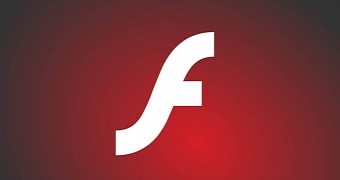The top companies in the tech world are getting tired of Adobe’s Flash Player, and after many years of struggling to deal with its security vulnerabilities, key players like Google, Microsoft, Apple, and Mozilla are finally pushing for the transition to HTML5 in a more aggressive way.
Flash Player will be disabled by default in browsers developed by these companies, as HTML5 will be preferred on websites that support it, and users will be given full control over Flash content on websites where it’s absolutely mandatory.
And while the trend here is to step away from Flash, Adobe is trying exactly the opposite on Linux with a brand new release that comes 4 years after originally giving up on the platform.
Last week, Adobe officially launched Flash Player 24 for Linux in a move that was announced in September and which took everyone by surprise.
How it all started
Adobe’s Linux adventure started in February 2012, when the company officially announced its decision to give up on Flash Player for Linux starting with version 11.2. This meant that no new versions beyond Flash Player 11.2 were supposed to launch for Linux systems, with Adobe planning to support this release until 2017 with security updates.
Adobe’s reasons for giving up on Flash Player for Linux weren’t exactly clear, but the company did provide users with a workaround: switch to Google Chrome and use Pepper, a plugin API that essentially made Flash Player a built-in feature which was automatically updated together with the browser.
In other words, Adobe wanted Linux users to switch to Google Chrome, or else Flash Player wouldn’t be supported directly on Linux systems.
The decision to discontinue Flash Player for Linux wasn’t such a big surprise for users in the open-source world. Adobe previously retired Adobe Air on the Linux desktop one year before in 2011, citing the flat growth curve for the platform.
“We see a basically flat growth curve hovering around 1%. And since the release of AIR, we’ve seen only a 0.5% download share for desktop Linux,” the firm said.
The 2016 surprise announcement
Earlier this year, however, Adobe announced that it would start supporting Flash Player on Linux once again, in a decision that nobody could see coming.
“In the past, we communicated that NPAPI Linux releases would stop in 2017. This is no longer the case and once we have performed sufficient testing and received community feedback, we will release both NPAPI and PPAPI Linux builds with their major version numbers in sync and on a regular basis,” Adobe announced.
Adobe, however, said that it wanted to focus specifically on the security improvements for Flash on Linux, suggesting that this is one of the reasons why it was going in reverse.
“Because this change is primarily a security initiative, some features (like GPU 3D acceleration and premium video DRM) will not be fully implemented,” the firm said.
This didn’t change anything for Google Chrome users, who already had the latest Flash Player improvements, but on the other hand, it signaled what many described as a desperate move given the decision of most browser developers to step away from Flash for HTML5.
Adobe Flash Player 24 on Linux
A few days ago, hell froze over for the second time this year, as Adobe officially released Flash Player 24 for Linux systems after previously offering it in beta for nearly 3 months.
The Linux version is 24.0.0.186, and this is fully in sync with clients for Windows and Mac OS X. This means that all platforms are now synchronized and get the exact same version of Flash Player.
This doesn’t mean too much, however, although some Linux users do need Flash. But their percentage is unlikely to be overwhelming, mostly because the majority already run Chrome, which itself is pioneering the transition to HTML5.
The plan is now to update Flash Player on all supported platforms, including Linux, at the same time, which means that security patches should be released on Windows, Linux, and Mac on the second Tuesday of each month.
Adobe has matched its patching cycle with Microsoft’s, so both companies roll out security updates for their software on the second Tuesday of every month as part of Adobe Tuesday and Patch Tuesday, respectively.
In the end, bringing back Flash Player on Linux is Adobe’s way of saying that it made a bad decision four years ago. And when looking at the bigger picture, it’s a move that’s very unlikely to slow down the transition off Flash.

 14 DAY TRIAL //
14 DAY TRIAL //